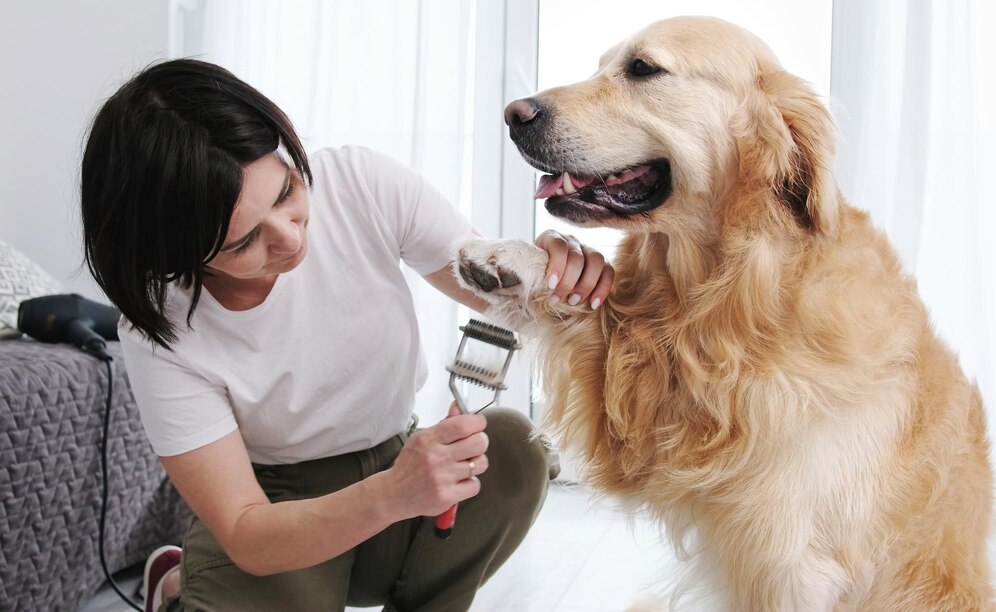The Pets Blog

How to Combine Wellness Plans with Pet Insurance: Smart Coverage for Complete Pet Care
Routine check-ups, vaccinations, and flea treatments? Covered. Emergency surgery, illness, and diagnostic imaging? Covered too. Pet owners feel peace of mind when they mix a wellness plan with traditional pet insurance.
Many UK pet owners still don’t know that these two products are different. Combining them wisely can help cut costs, fill coverage gaps, and enhance pet care.
This guide explains how wellness plans differ from pet insurance. It also shows how to use both for complete and affordable protection that suits your pet’s needs.
Understanding the Core: Wellness Plans vs Pet Insurance
Wellness plans and pet insurance are often mixed up, but they have different purposes. Knowing the difference is the first step to creating a balanced coverage plan.
Wellness Plans
- Cover routine, preventative care
- Usually offered by your veterinary practice or as a subscription service
- Include vaccinations, flea and worm treatment, nail trims, annual exams
- Spread costs over monthly or annual payments
Pet Insurance
- Covers unexpected accidents and illnesses
- Offered by third-party insurance companies
- Covers diagnostics, prescriptions, surgeries, and hospital stays
- Requires claims to be submitted for reimbursement
A wellness plan is like a budget for regular healthcare, and insurance is your safety net for emergencies. Together, they provide coverage for both predictable and unpredictable health needs.
Quick-Reference Summary: Pet Care Combo Coverage Checklist

- Confirm that your pet insurance doesn’t already include routine care add-ons
- Choose a wellness plan from your vet or a subscription service
- Calculate your total cost vs the annual value of included services
- Select an insurance policy focused on accident and illness cover
- Ensure there is no duplication or overlap between services
Step-by-Step Guide: How to Combine Wellness Plans with Pet Insurance
1. Evaluate Your Pet’s Routine Care Needs
Start by estimating your pet’s typical annual preventative care costs:
- Vaccinations: £40–£70
- Flea and worming treatment: £5–£10 per month
- Annual health check: £30–£50
- Optional dental cleaning: £100–£300
Wellness plans make costs easier to handle. They offer predictable monthly payments. Plus, they often include perks like discounts on microchipping and blood tests.
A £12/month plan gives you over £250 in annual care services. This can help you budget better and save a little money.
2. Choose the Right Pet Insurance for Unexpected Needs
Insurance is essential for more serious health events. When selecting a policy, look for:
- Emergency and illness cover
- Cancer treatment and diagnostics
- Hospitalisation, imaging, and surgeries
- Lifetime or maximum benefit coverage options
Make sure the plan:
- Clearly outlines annual vet fee limits and per-condition caps
- Lists all exclusions and excess amounts
- Does not duplicate wellness services you’re already paying for
For assistance, check a guide on picking the right pet insurance for your pet and lifestyle.
3. Check for Bundled or Add-On Options
Some providers now offer wellness coverage as an optional add-on to their insurance policies. This may sound convenient, but it has pros and cons.
Pros:
- One monthly payment
- Centralised claims and documents
Cons:
- It may cost more overall
- Might restrict you to participating vets only
Check if your vet has a wellness plan. It might be more flexible or cheaper than your insurance package.
4. Avoid Paying Twice for the Same Service
Some policies include optional preventative care riders. If you already have a wellness plan, adding this rider is unnecessary.
Be sure to:
- Read both policies to spot overlapping services
- Avoid duplicated coverage for items like flea/worming treatments or dental cleanings
- Ask for itemised breakdowns to see exactly what each plan covers
This will ensure you’re only paying once for each service—and not funding benefits you won’t use.
5. Track Usage and Reassess Annually
Once your plans are in place, review them each year to ensure continued value:
- Track how often you use wellness services
- Compare the total cost of each plan to its actual usage
- Review any insurance claims or changes in your pet’s health profile
As your pet ages or develops new health issues, your insurance needs and wellness plan may change. An annual reassessment keeps your coverage efficient and relevant.
Pro Tips and Important Notes
Things You Should Do
- Pair a local vet-issued wellness plan with a third-party insurer for complete care
- Save receipts for all services. They might help with insurance claims or reviews of your medical history.
- Manage payments and documentation digitally for easy access
Things to Avoid
- Overlapping cover—double-check flea treatments, dental care, and annual exams
- Wellness coverage is not the same as insurance. It doesn’t cover emergency care or serious illnesses.
- Each provider may have different rules. They might look at your pet’s age, breed, or any pre-existing conditions. Don’t overlook the fine print!
A real-life example: One pet owner had a wellness plan from the vet. It cost £10 a month and covered vaccinations, blood tests, and monthly flea treatment. Their insurance policy later reimbursed £450 for an injury sustained at the park. The combination provided seamless support and saved them over £400 that year.
Best Practices and Additional Insights
Consider Your Pet’s Life Stage

- Wellness plans, which should include vaccinations, early parasite prevention, and discounts for neutering, are most beneficial for puppies and kittens.
- Adult pets: Typically healthy, making insurance more critical for unexpected injury or illness
- Senior pets may benefit from both wellness plans and illness coverage. Wellness plans can include bloodwork and dental care, while illness coverage is important for chronic conditions.
Budget Monthly—but Plan for the Year
- Use a wellness plan to spread the cost of routine care over 12 months
- Rely on insurance to buffer high-cost emergencies or chronic treatments
- Assess value not just by month-to-month savings, but by how much risk is mitigated over the year
If you’re concerned about costs, refer to our guide on how to lower your pet insurance premium. Combining the right plans can increase protection while keeping long-term expenses under control.
FAQs: Combining Wellness Plans with Pet Insurance
Can I claim wellness costs through pet insurance?
Generally no. Pet insurance covers unexpected, necessary medical treatments. Routine services, like vaccinations, are not included unless you add them on.
Are wellness plans worth it in the UK?
If your pet often uses the services, they provide great value and convenience. They’re particularly helpful for new pet owners or pets with high routine care needs.
Do I need both wellness and insurance?
That depends on your goals. For complete coverage—covering both expected and unexpected expenses—yes. But if your pet is very healthy and you’re comfortable with risk, you might choose one or the other.
Will having both affect how I file claims?
Not at all. Wellness services are prepaid or discounted via your vet. Only submit insurance claims for events covered by your policy.
Conclusion: Combine for Convenience, Confidence, and Complete Care

Pet insurance protects against the unpredictable. Wellness plans make routine care manageable. Using both wisely builds a strong foundation. This protects your pet’s health and gives you peace of mind. It also helps you manage your budget.
Choose options that fit your pet’s life stage, lifestyle, and health. This way, you can create a coverage plan that lasts from their first vaccines to senior care.









